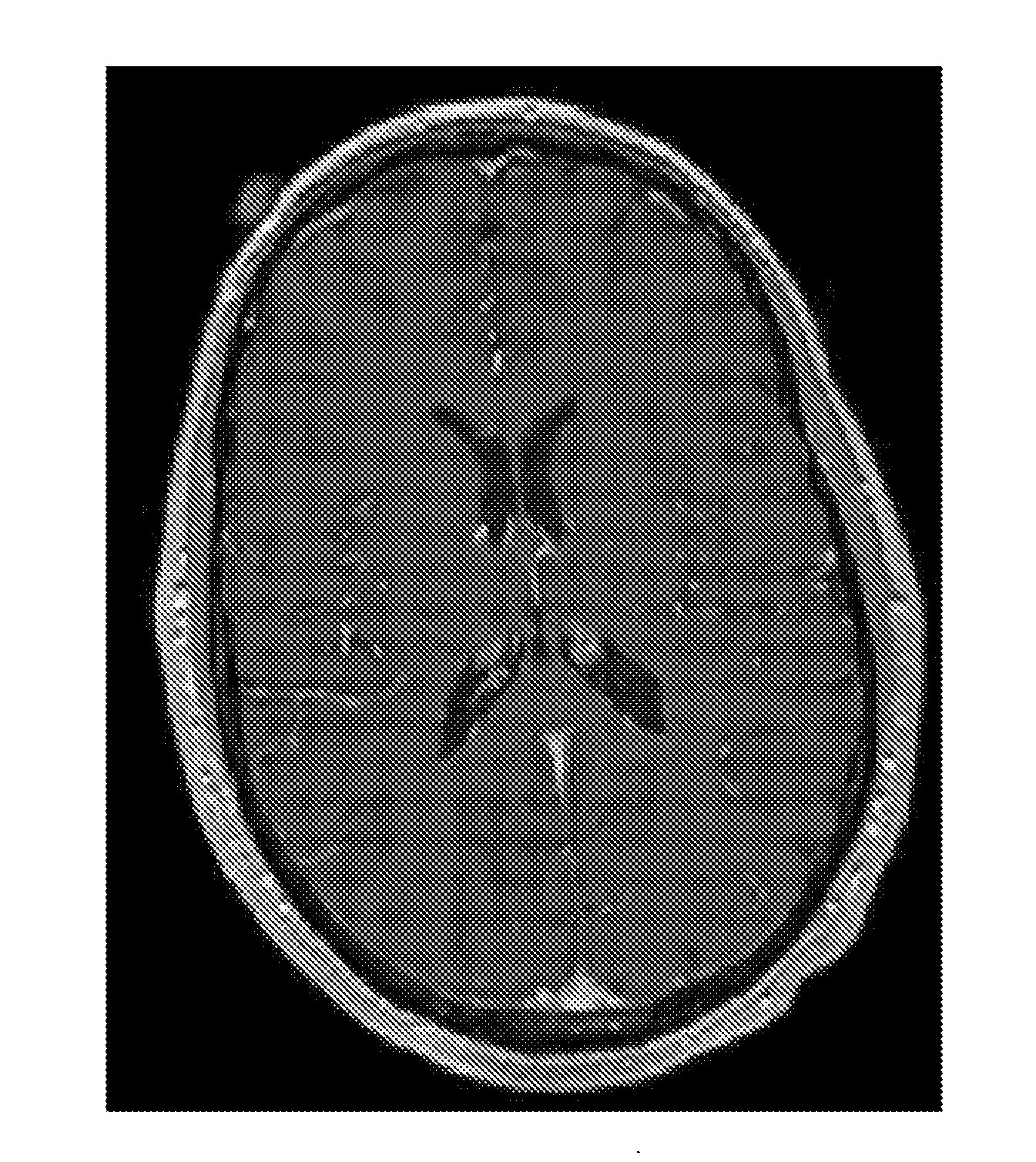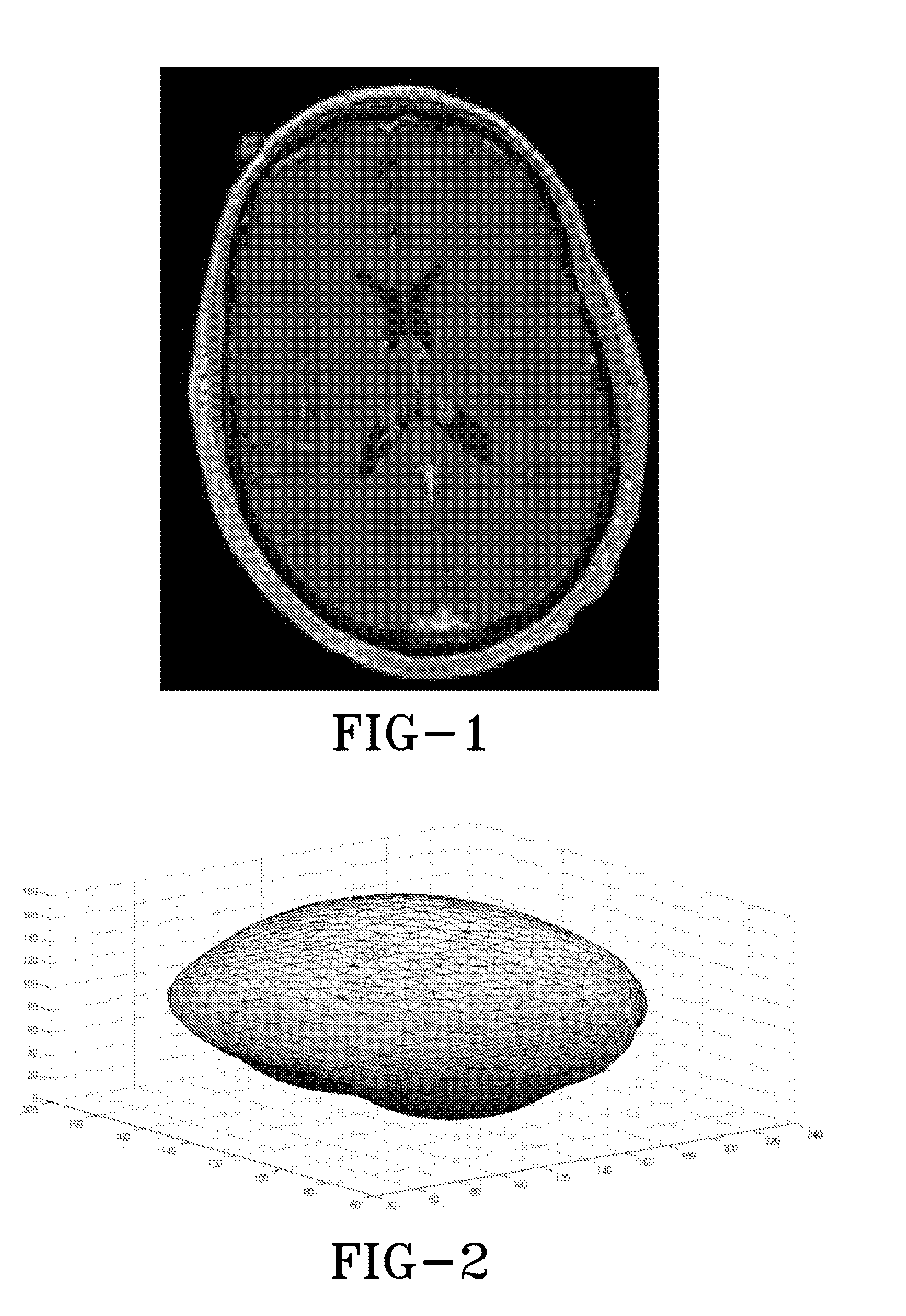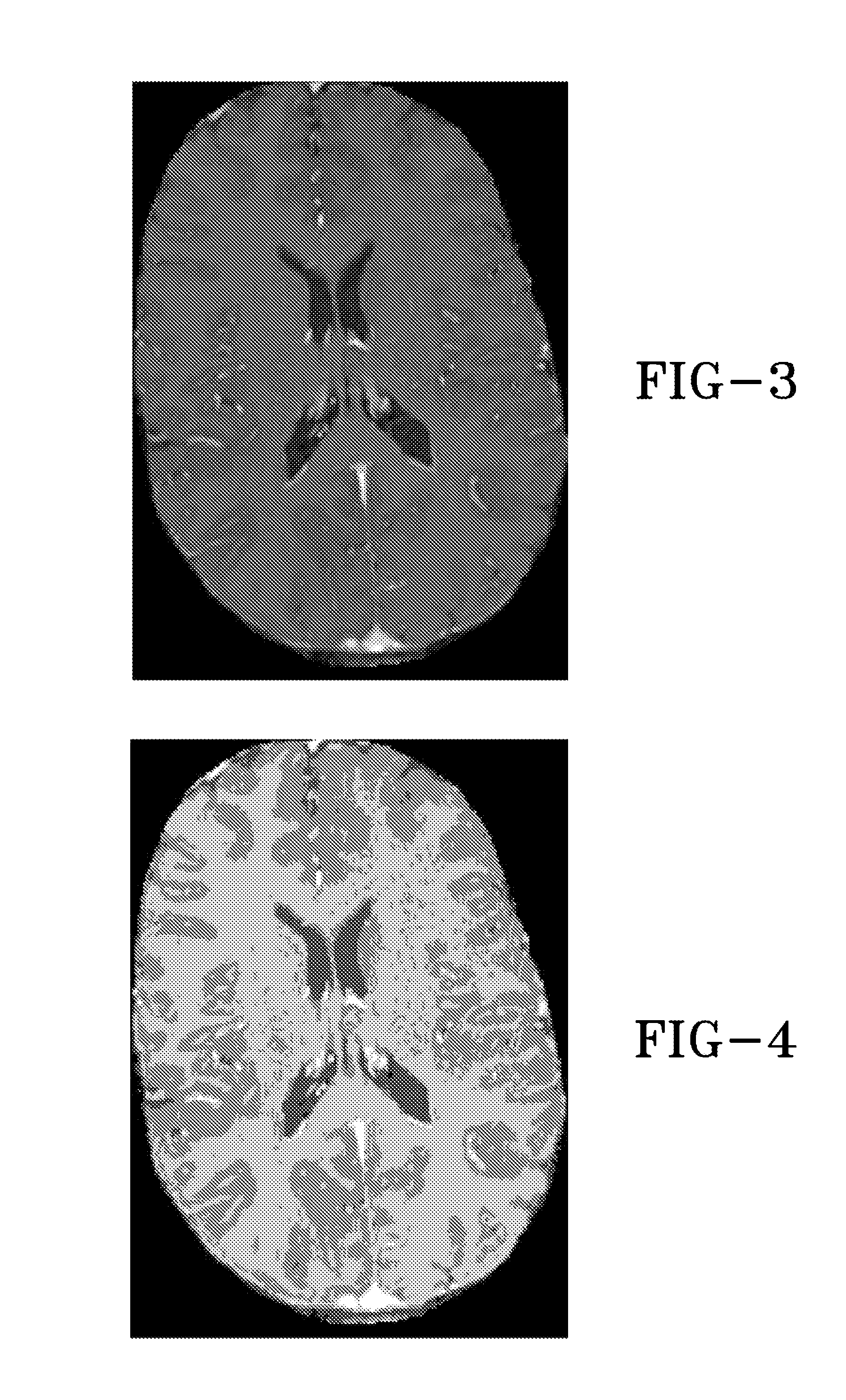Automated trajectory planning for stereotactic procedures
a stereotactic procedure and automatic technology, applied in the field of medical imaging technology, can solve problems such as difficulty in visually evaluating each trajectory simultaneously, and achieve the effect of removing inappropriate trajectories
- Summary
- Abstract
- Description
- Claims
- Application Information
AI Technical Summary
Benefits of technology
Problems solved by technology
Method used
Image
Examples
Embodiment Construction
[0013]The system, apparatus, and methods of the invention facilitate selection of safe trajectories and entry points to a defined target area in an anatomical region such as the brain based on preoperative imaging studies, including MRI and CT. A target area is defined as the point or general region in the anatomical region (e.g., brain) to be reached by stereotactic procedure. An entry point is the point at which the anatomical region is entered from the outside. The trajectory is defined as the path (e.g., linear, non-linear continuous, non-continuous, or otherwise defined) from the entry point to the target area. The target area may be predefined or selected by the user with or without automated registration to a standardized anatomy atlas. Alternatively, the target area may be defined relative to anatomical landmarks. For example, in the brain the landmarks may include the anterior commissure (AC) and posterior commissure (PC), which may be identified interactively by the user o...
PUM
 Login to View More
Login to View More Abstract
Description
Claims
Application Information
 Login to View More
Login to View More - R&D
- Intellectual Property
- Life Sciences
- Materials
- Tech Scout
- Unparalleled Data Quality
- Higher Quality Content
- 60% Fewer Hallucinations
Browse by: Latest US Patents, China's latest patents, Technical Efficacy Thesaurus, Application Domain, Technology Topic, Popular Technical Reports.
© 2025 PatSnap. All rights reserved.Legal|Privacy policy|Modern Slavery Act Transparency Statement|Sitemap|About US| Contact US: help@patsnap.com



